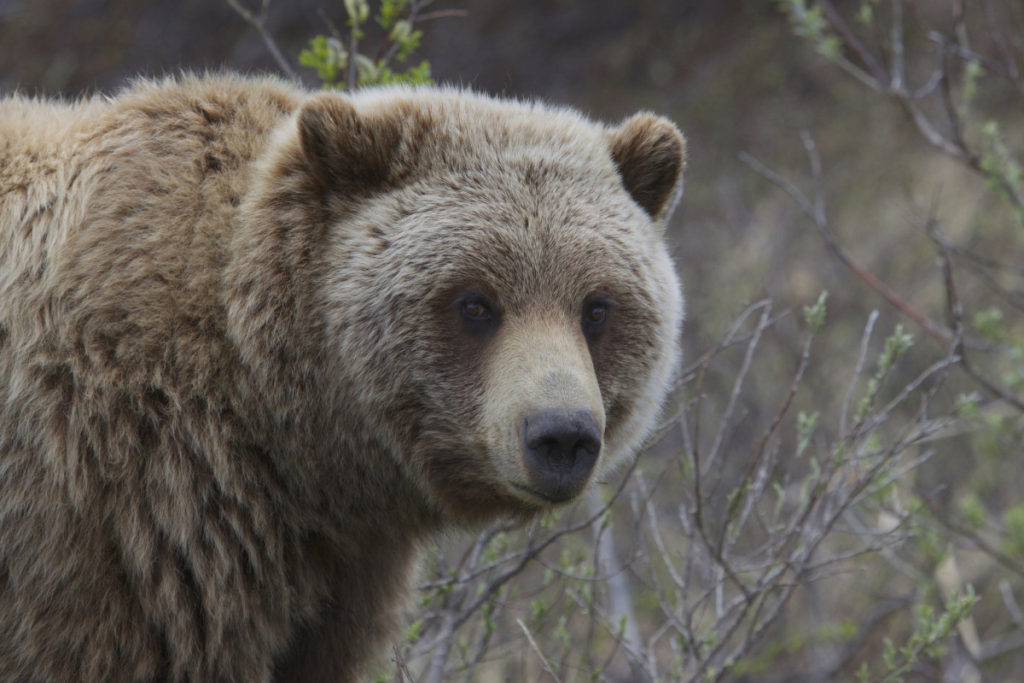Table of Contents
BEAR STORIES
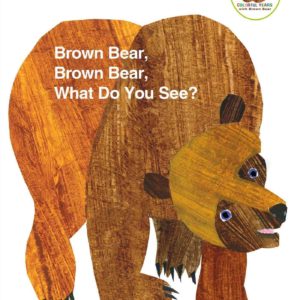
|
In Bill Martin, Jr.’s Brown Bear, Brown Bear, What Do You See? (Henry Holt and Co., 1996), a rhythmic repetitive text is paired with gorgeous paper-collage illustrations of colorful animals (brown bear, red bird, purple cat, green frog, blue horse) by Eric Carle. For ages 2-5. |
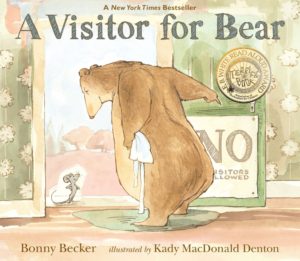
|
In Bonny Becker’s delightful A Visitor for Bear (Candlewick, 2012) – with wonderful and witty illustrations by Kady Denton – Bear doesn’t like company. His door even boasts an enormous sign: NO VISITORS ALLOWED. Then the persistent Mouse shows up, and eventually Bear discovers the error of his ways. Sequels include A Birthday for Bear and Bedtime for Bear. For ages 3-7. |
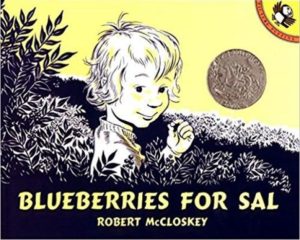
|
In Robert McCloskey’s Blueberries for Sal (Viking Juvenile, 1948), Sal and a bear cub have both gone with their mothers to the same Maine blueberry patch for blueberries – and suddenly there’s a dreadful mix-up. A classic for ages 3-7. |
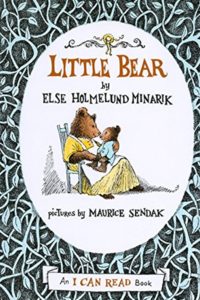
|
The main character of Else Holmelund Minarik’s Little Bear (HarperTrophy, 1978) is a furry and imaginative charmer: this, the first of the Little Bear books, has four short stories in which Little Bear variously plays in the snow, makes birthday soup, flies to the moon, and makes a special wish. Several sequels. For ages 3-7. |
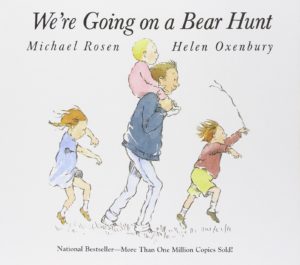 |
By Michael Rosen, illustrated by Helen Oxenbury, We’re Going on a Bear Hunt (Little, Brown, 1997) is a classic and hilarious adventure, as a family romps across the countryside hunting for a bear. For ages 3-6. |
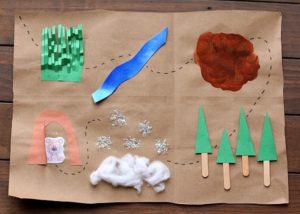 |
Visit Spruce Crafts for a list of cool bear crafts, including a bear hunt map project. |
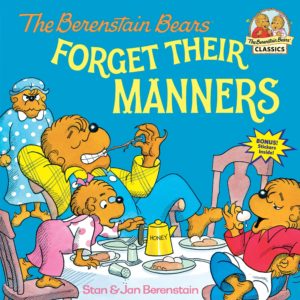 |
There are many many improving titles in Jan and Stan Berenstain’s Berenstain Bears series (Random House), in which Brother and Sister Bear learn about the evils of junk food, greediness, too much television, and teasing, discover the importance of telling the truth, doing chores, and minding their manners, and cope with the doctor, the dentist, bad dreams, and bad habits. I am not fond of these – doofy Papa Bear and moralizing Mama Bear are a little much for me – but a lot of kids love them. Even a couple of mine. For ages 3-7. |
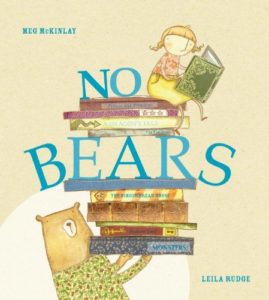
|
In Meg McKinlay’s No Bears (Candlewick, 2012), Ella explains that a good story should have a princess, a fairy godmother, and a monster – but NO BEARS. (But there are helpful bears everywhere.) For ages 3-7. |
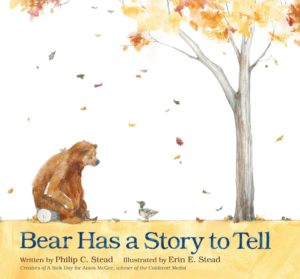
|
In Philip C. Stead’s Bear Has a Story to Tell (Roaring Brook Press, 2012), Bear wants to tell a story before curling up in his den to hibernate, but his friends – Mouse, Duck, Frog, and Mole – are all too busy preparing for winter to listen. Patient Bear lends them all a helping paw – and then, winter over, the friends regroup and Bear prepares to tell his story again. Unfortunately, he can’t remember what he was going to say – though it turns out that all he needs is a little prompting from his pals. For ages 4-7. |
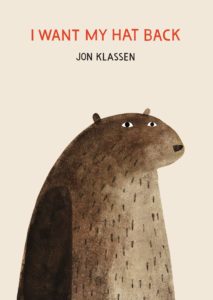
|
In Jon Klassen’s poker-faced I Want My Hat Back (Candlewick, 2011), a bear has lost his hat and proceeds to question a long list of woodland creatures, all of whom deny knowledge of the hat, including the rabbit, who is obviously wearing it. Then realization dawns. (“WAIT! I HAVE SEEN MY HAT!”) For ages 4-8. |
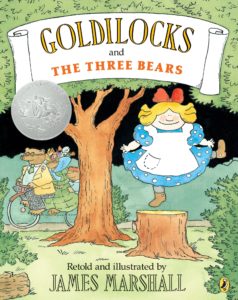
|
James Marshall’s version of Goldilocks and the Three Bears (Puffin, 1998) treats the traditional tale with wit and pizzazz. His Goldilocks is both naughty (“What a sweet child,” remarks a newcomer to town. “That’s what you think!” retorts another.) and clueless (confronted with brown fur in the bear’s house, she concludes “They must have kitties!”). For ages 4-8. |
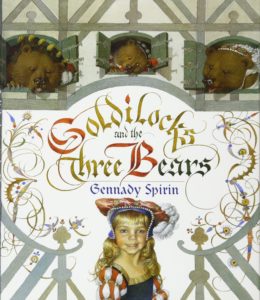
|
In Gennady Spirin’s Goldilocks and the Three Bears (Two Lions, 2009), a simple traditional text is paired with gorgeous Renaissance backgrounds and costumes. For ages 4-8. |
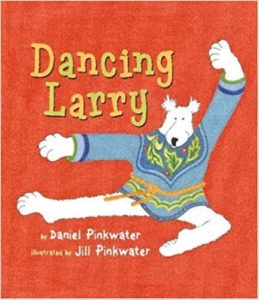
|
Daniel Pinkwater’s Larry is a polar bear with style. He likes blueberry muffins and ballet, enjoys his job as a lifeguard, and lives in a hotel. Some of the Larry books are (rrr) out of print, but can be obtained inexpensively from used-book stores – and for free from public libraries. Titles include At the Hotel Larry, Sleepover Larry, Dancing Larry, and Ice-Cream Larry. For ages 4-8. |
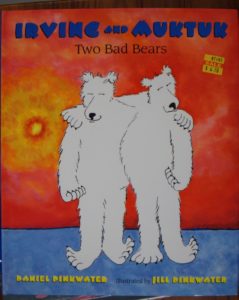
|
For fans of Larry, also check out Pinkwater’s Irving and Muktuk, who are Bad Bears. Havoc follows in their wake. Titles include Irving and Muktuk: Two Bad Bears, Bad Bear Detectives, Bad Bears in the Big City, and Bad Bears and a Bunny. Like all Pinkwater books, clever and hilarious. |
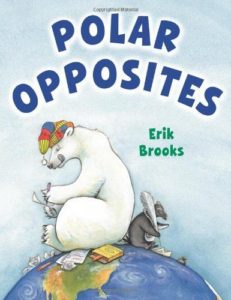
|
By Erik Brooks, Polar Opposites (Two Lions, 2010) is the story of Alex, a polar bear who lives in the Arctic, and Zina, a penguin who lives in the Antarctic. They’re not at all alike – Alex is big and Zina is small, Alex is loud and Zina is quiet – but when they meet at the equator, it’s clear that the disparate pair are best friends. For ages 4-8. |
| From the Crafty Crow, fun accompaniments for Polar Opposites are the Penguin and Polar Bear Crafts, which include a handprint polar bear, a polar bear mask, penguin bean bags, and more. | |
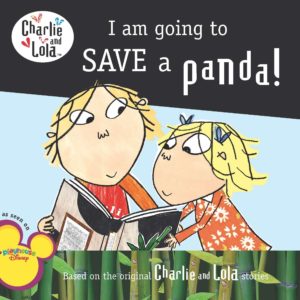
|
In Lauren Child’s I Am Going to Save a Panda (Grosset & Dunlap, 2010) – starring the perpetually entertaining Charlie and Lola – it’s Save the Animals Week and Lola and friend Lotta are bent on raising money to save a panda bear. Then Lola comes down with chicken pox. For ages 4-8. |
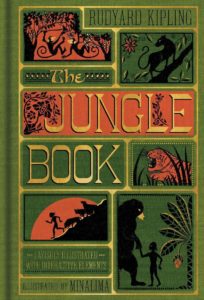
|
Rudyard Kipling’s The Jungle Book – originally published in 1894 and now available in many editions – is a collection of wonderful short stories, many of them about Mowgli, a boy raised by wolves in the Indian jungle, who – with the help of Baloo the Bear and Bagheera the panther – battles the tiger Shere Khan. (The collection also includes the story of “Rikki-Tikki-Tavi,” the little mongoose who fights cobras.) For ages 6 and up. |
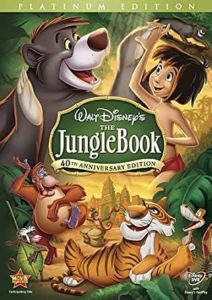 |
In the Disney film version of The Jungle Book (1967), Baloo the bear and Bagheera the panther try to convince young Mowgli (the “man-cub”) to return to his own kind in order to keep him safe from Shere Khan, the tiger. Baloo sings “Bear Necessities.” |
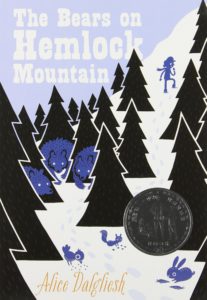
|
In Alice Dagliesh’s The Bears on Hemlock Mountain (Aladdin, 1992) – originally written in 1952 and based on an old Pennsylvania tale – young Jonathan is sent on a journey over Hemlock Mountain on an errand for his mother. Everybody has told him that there are no bears – NO BEARS – on Hemlock Mountain, but it turns out that everybody was dead wrong. Luckily Jonathan is equipped with a large iron pot. For ages 6-9. |
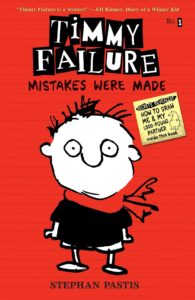
|
In Stephan Pastis’s hilarious comic novel Timmy Failure: Mistakes Were Made (Candlewick, 2013), eleven-year-old Timmy is the hapless CEO of the best detective agency in the world (Total Failure, Inc.) – in company with Total, his business partner, a large and lazy polar bear with a habit of eating trash. A hoot for ages 8 and up. |
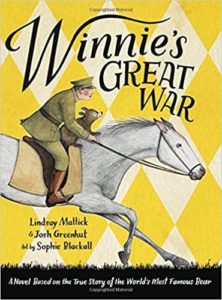
|
Lindsay Mattick’s Winnie’s Great War (Little, Brown, 2018) is the fictionalized story of the real-life little bear who traveled from the Canadian forest to Europe during World War I, and eventually inspired the story of Winnie the Pooh. For ages 8-12. |
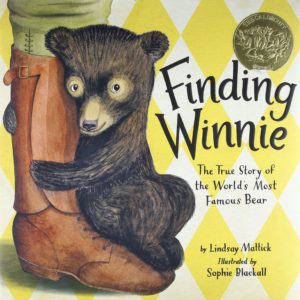 |
For a picture-book version of the story for younger kids, see Mattick’s Finding Winnie (Little, Brown, 2015). For ages 5-8. |
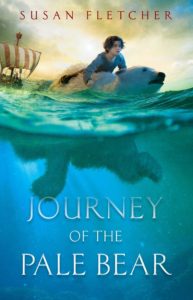
|
Set in the 13th century, Susan Fletcher’s Journey of the Pale Bear (Margaret K. McElderry, 2018), is the story of a bear sent as a gift from the King of Norway to the King of England – and befriended en route by young Arthur, a runaway. An adventurous story based on a true account of the “pale bear” kept by Henry III in his menagerie in the Tower of London. For ages 8-12. |
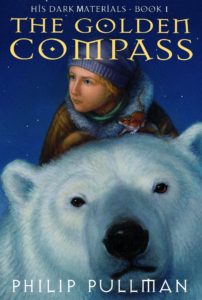
|
Among the most fascinating and powerful characters in Philip Pullman’s His Dark Materials trilogy are the great armored bears of the far North. Titles in the trilogy are The Golden Compass, The Subtle Knife, and The Amber Spyglass. A challenging and wonderful read for ages 10 and up. |
| In the film version of The Golden Compass (2007), Iorek Byrnison, everyone’s favorite armored bear, is voiced by Ian McKellen. Rated PG-13. | |
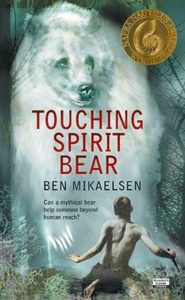
|
Ben Mikaelsen’s Touching Spirit Bear (HarperTeen, 2005) is the story of teenage delinquent Cole Matthews who faces a prison sentence for severely beating a classmate. Due to the intervention of a Tlingit parole officer, however, Cole opts for Native American Circle Justice – in lieu of jail, he’ll spend a year on his own on a remote Alaskan island. There he encounters (almost fatally) a great white bear and learns to come to terms with himself and his troubles. For ages 12 and up. |
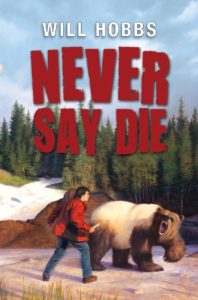
|
In Will Hobbs’s Never Say Die (HarperCollins, 2013), Nick – a 15-year-old half-Inuit boy – accompanies his older brother Ryan, a nature photographer, on a trip to the Arctic. After their raft is lost in a log jam, the trip turns into a harrying struggle to survive. The brothers are traveling through grizzly country, and there’s an especially dangerous grolar – a hybrid grizzly-polar bear – on the prowl. Adventure, danger, and a strong climate change message for ages 11 and up. |
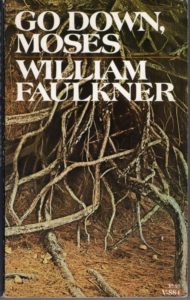 |
William Faulkner’s short story, “The Bear,” appears in Faulkner’s short story collection Go Down, Moses (Vintage Press, 1991). For teenagers and adults. |
